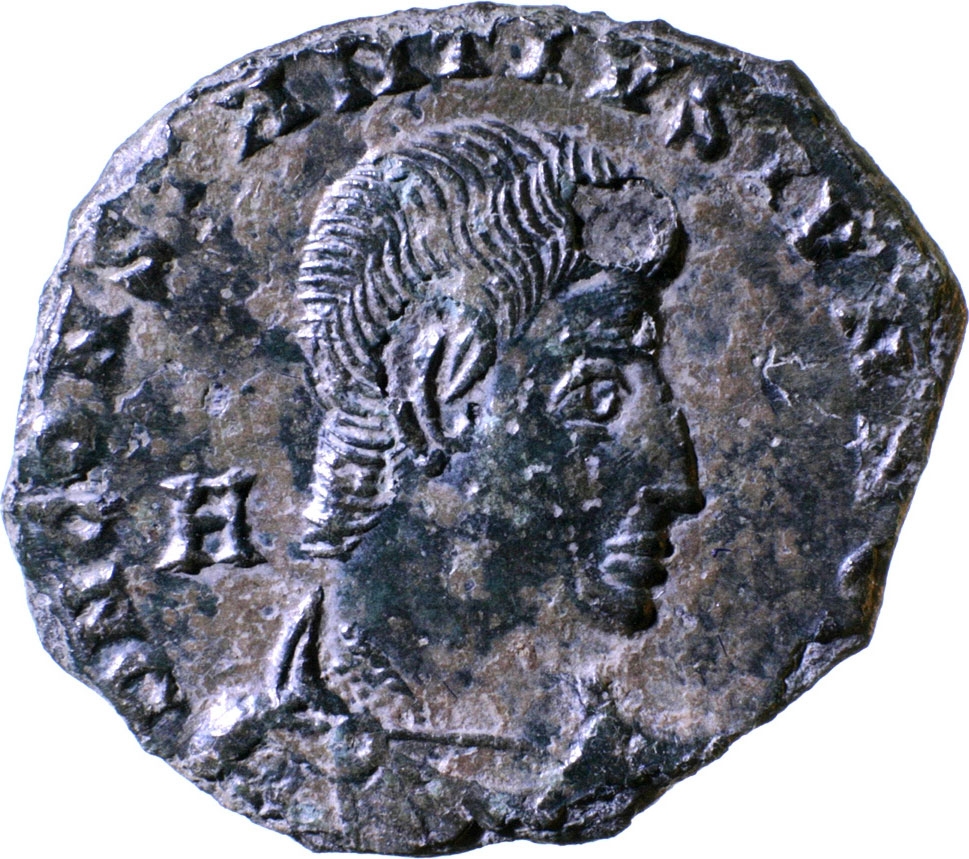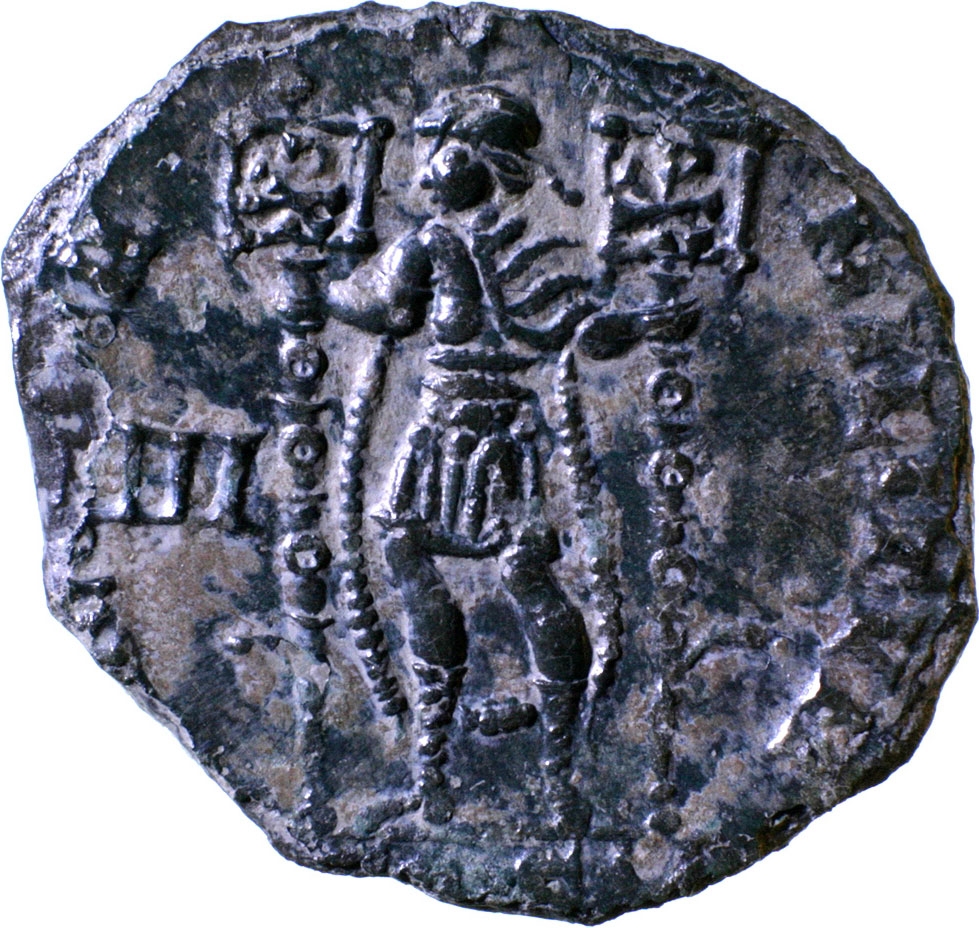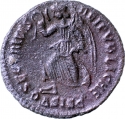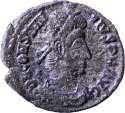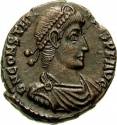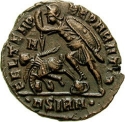You are about to finish your registration. Please check your mailbox (including spam folder). There should be a letter with a confirmation link. Check setting to make sure that your e-mail address is correct.
Send letter againDescription
Constantius Gallus (Flavius Claudius Constantius Gallus) was a member of the Constantinian dynasty and Caesar of the Roman Empire (351–354). Gallus was consul three years, from 352 to 354.
The bronze centenionalis coins were the attempts of Constans and Constantius II to reintroduce a large bronze coin between 320 and 340 AD, as the follis had by then shrunk dramatically. The type of coin it was is uncertain, but numismatists have categorized large bronze coins of the above date under this denomination. The centenionalis, however, did not last long. By the end of Theodosius the Great's rule, only smaller varieties of bronze coins were minted (AE3 and AE4).
Obverse

|
Constantius Gallus, laureate, bare-headed, draped, cuirassed bust right. DN CONSTANTIVS IVN NOB C |
|---|---|
Reverse

|
Emperor standing left, holding labarum (Chi-Rho standard) in each hand, star above. III in the left field. CONCORDIA MILITVM |
| Edge | - |
